
What is Propagation?
THE DICTIONARY SAYS: Prŏp″ə-gā′shən Multiplication or increase, as by natural reproduction
Multiplication is an understatement when it comes to succulents! Succulents are the rabbit of the plant family, they reproduce quickly. And if you know how to separate them, you can create many more lovely plants, otherwise known as PROPAGATION!
When I started this page, I thought I could quickly put together a tutorial on how to propagate succulents, since it has become such a passion of mine. I had taken some great photos over the past decade or so, and wanted to share them with others and give some advice on what I’ve learned along the way. But as I started creating folders for each variety of succulent found in my saved photos, I realized this project was going to take me a lot longer than I thought.
First, with each new variety I had to research the name of the plant, which wasn’t an easy task. After hours and hours of research, and cutting and pasting pictures into folder after folder, I found that I actually had over 30 different types of succulents in my garden! And it was so interesting to see which of them were in the same family! Apparently there are 50-60 different succulent “families” and over 10,000 different types of succulents in the world. Who knew??
After finally getting all of my photos separated, I was ready to start showing off the variety of ways that succulent plants propagate themselves! To me, it was the reason I was so fascinated with succulents. I had no idea that a plant could drop a leaf and a new plant could reproduce right from that leaf! After gardening for decades with vegetables, and hundreds of house plants, I had never worked with succulents before, so it really was surprising to me.
The benefits of propagating succulents are unique to each person. You may want to add on to your garden, use them to make gifts, or share them with friends and family. All it will cost you is the price of some dirt, some containers and your time, love, and patience. But be careful, working with these plants is addicting once you see the results!
My own addiction with succulents began shortly after I had relocated across the country, back home to California from Pennsylvania. 4 years before, we had left California for a temporary move to the east coast, and I had left all of my house plants behind. I never purchased a house plant in the 4 years we were in PA, although we did have the best vegetable gardens of our lives while living there, I’m assuming it was because of the heat and humidity.
Upon moving back home to Northern California, I found a lonely jade plant at a garage sale for $2.00 and brought it home as my first new plant in this next phase of our lives. It stood about 12” tall and to me it was beautiful. It was sturdy and plump and over time I saw that with every season it took on a new look. It bloomed beautiful pink flowers in the winter time! Flowers in winter? By spring the blooms are ready to fall off and the gorgeous green color of the plant continues into summer. Here she is in mid-February 2023 at 10 years old:
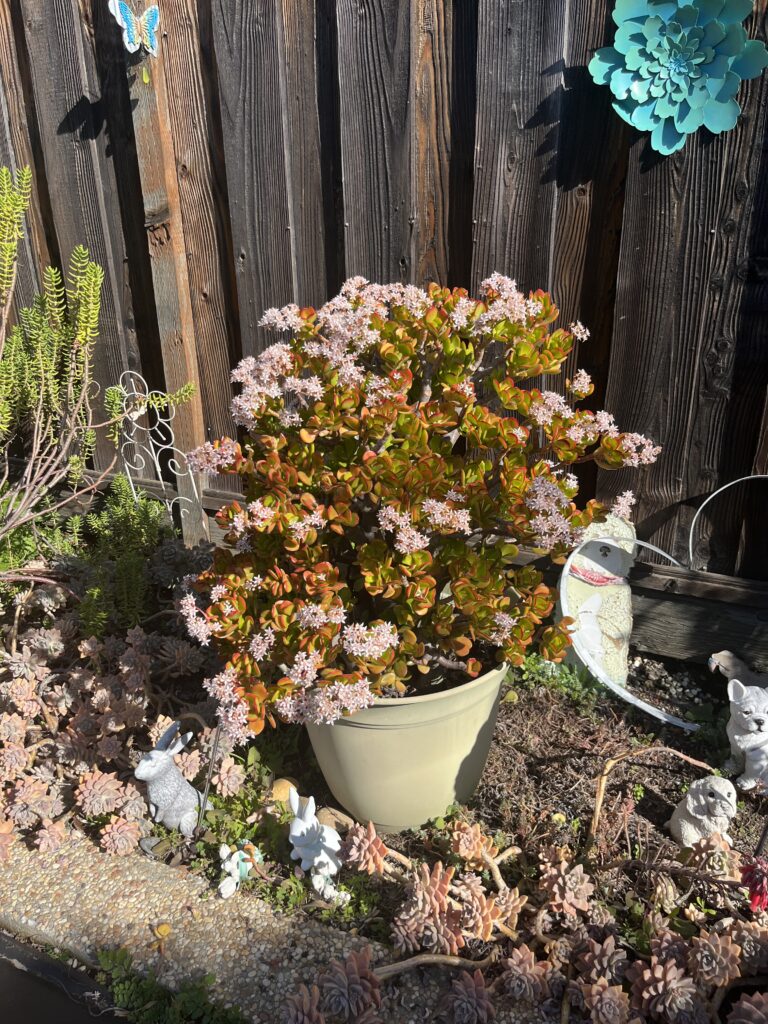
Anyway, back to my addiction, one day a coworker overheard me talking about my Jade plant. A week or so later he brought me some clippings from the succulents in his mother’s garden. He said “just put them in a pot of dirt and they’ll grow” which I didn’t understand…where were the roots? How could you just plant a clipping and get a new plant? But he insisted so I planted them into some pots, and some into the ground, and my new fascination for succulents began to grow (no pun intended).
A few months later this same coworker told me his mother was moving into a retirement home and was having a garage sale (I need to write a page about garage sales). She was in her 90’s and had lived in her house for quite a while. He snickered again about her succulents, so of course I wasn’t going to miss that garage sale!! Once I got to her house, I understood what his snicker was all about. I walked into her rather large backyard and everywhere my eyes could see were succulents. In pots of every shape and size, in the ground, around a homemade pond, along every fence. In varieties and sizes I’d never seen before. It was incredible! I had no clue how anyone could acquire so many plants. It was beautiful and I was inspired.
I purchased some of her plants, and with the ones I already had I was on my way. Little did I know that 10 years later my backyard would resemble this yard, and inspire others! All because of propagation, another thing I had no clue about. It is the reason this lovely little old lady’s garden had grown to its size. The succulents reproduce so quickly, and if you love plants, you want to save every single one of them. Some would call it an obsession. I call it love. Love of nature, love of creation, love of nurturing, love of my plants.
Finally, let me tell you what I’ve learned about PROPAGATION! Each plant reproduces in its own way, some will grow small plants on each stem that can be carefully removed and replanted; some will produce multiple baby off-shoots, which can be clipped and replanted; some you can just break off a branch and replant it, like the Jade plant pictured above; and some reproduce from a fallen leaf, which will start to grow its own roots, and develop into a new plant! Once you get to know your plants, you will see for yourself how their reproductive system works.
You can gather succulent babies and clippings when you are ready to propagate. You can also collect them as you are weeding and cleaning up your garden.
As I collect the clippings and babies I find, I place them on a plate that I keep in my garden. When I have time, I will plant them into pots or the ground. In the meantime, they are perfectly happy to be on this plate for months, even years on end! As long as I water them, they will grow strong on this plate, it’s crazy!!



You can use any type of container as propagation pots. One of my favorites is to use the saucers from my outdoor plastic pots. I don’t use the saucers outdoors, because when watering the plants I like my outdoor pots to drain directly into the ground. So, I found a better use for them! I poke holes in them using an ice pick, then fill them with dirt, and place my babies into them until they are stronger. Then I transfer them into a bigger pot or into the ground.




Here are some examples of the propagation saucers I’ve had over the years:







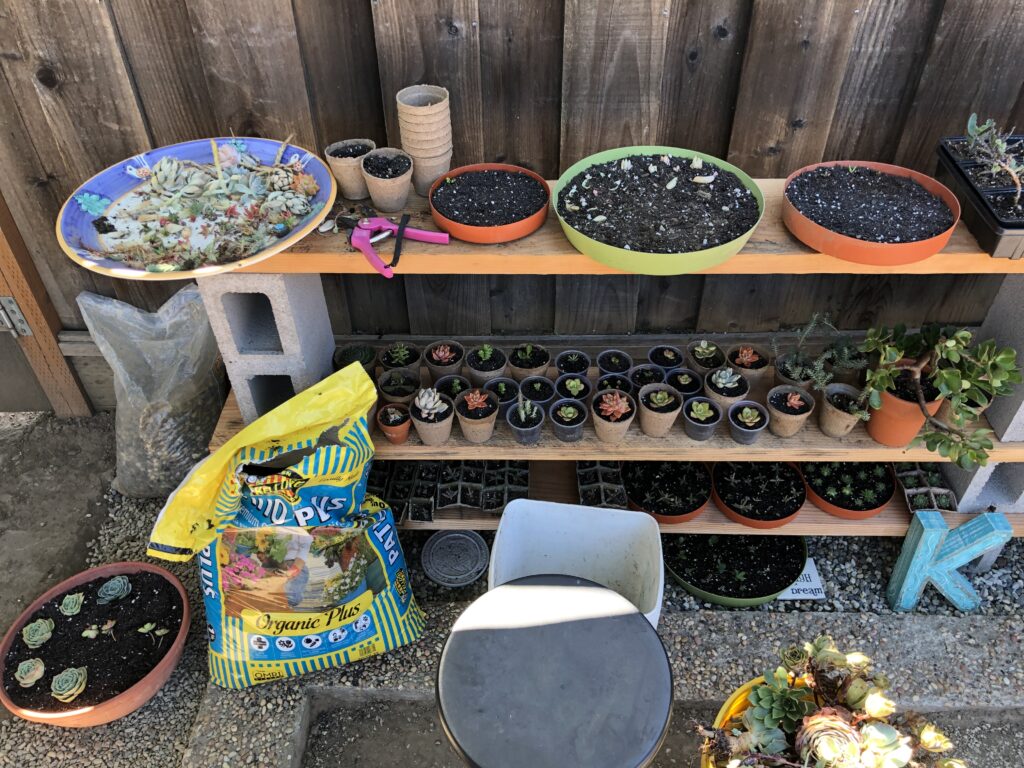
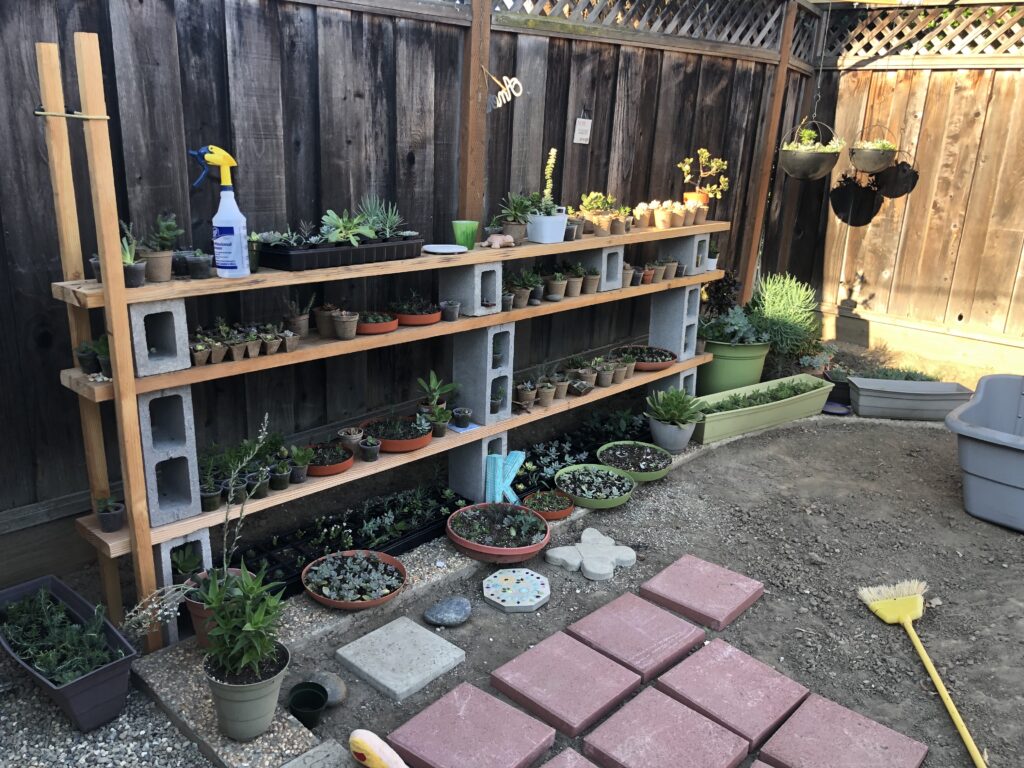
CARING FOR YOUR PROPAGATION POTS
FYI: these are all outdoor propagations

Remember, these new babies need to be cared for like babies, gently and with love. For watering, it’s best to use a spray bottle if you have one. If you don’t have one, you can use your cupped hand to apply the water, or a mist setting on the spray nozzle of your garden hose. Water them thoroughly until the soil is completely saturated around the plants or leaf, and you see water coming out of the bottom of the saucer. Do not water them again until the soil is completely dry. Once they are rooted into the saucer you can use a light spray from your garden hose to water them.
The next important thing to know about caring for these babies is how much sun they will need. Different varieties of succulents require different sunlight to survive and thrive, but all babies require the same care. Until they get a strong root system, make sure they don’t get too much sun. Place the saucers in a spot that will provide morning sun and afternoon shade. Once they have some solid roots you can transfer them to a bigger pot, or to the ground. Where you place these more mature plants will depend on the plant, and the amount of sunlight they require.
I have already created tutorials on how to care for your plants, and one on a fun project you can do with your new plants! Here are the links, they will give you some things to think about and really help you care for your plants as they mature:
Miniature Potted Garden Project
10 Tips on How to Care for Your Keepsake Garden Project
Keepsake Crafter Tip: When I’m propagating, I like to mix and match a few varieties together into plastic pots for an interesting display. Then, once their roots have started to grow and settle into the dirt, and they have grown comfortably together, I transfer them directly into the ground in my garden, or into a larger more decorative pot as a gift or for displaying. This helps assure they will survive and thrive together in their new home, and they start off in the ground (or pot) already happy to have their friends with them. Just keep in mind when you are mixing varieties together that they need to be able to survive in the same environment. So, for example, don’t mix low-light plants with plants that require a lot of light.
Do a little research on your succulents then, by trial and error, you will be rewarded beyond your imagination.
Click on the links below for more detailed information and pictures on the propagation of some of my favorite succulents:
Crassula Capitella – Campfire Crassula
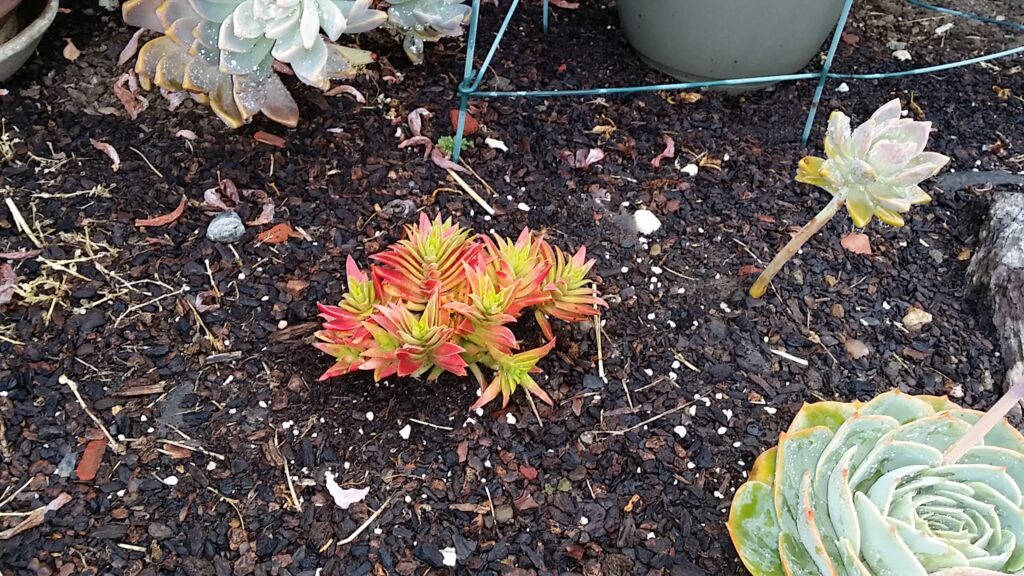
Graptosedum – California Sunset
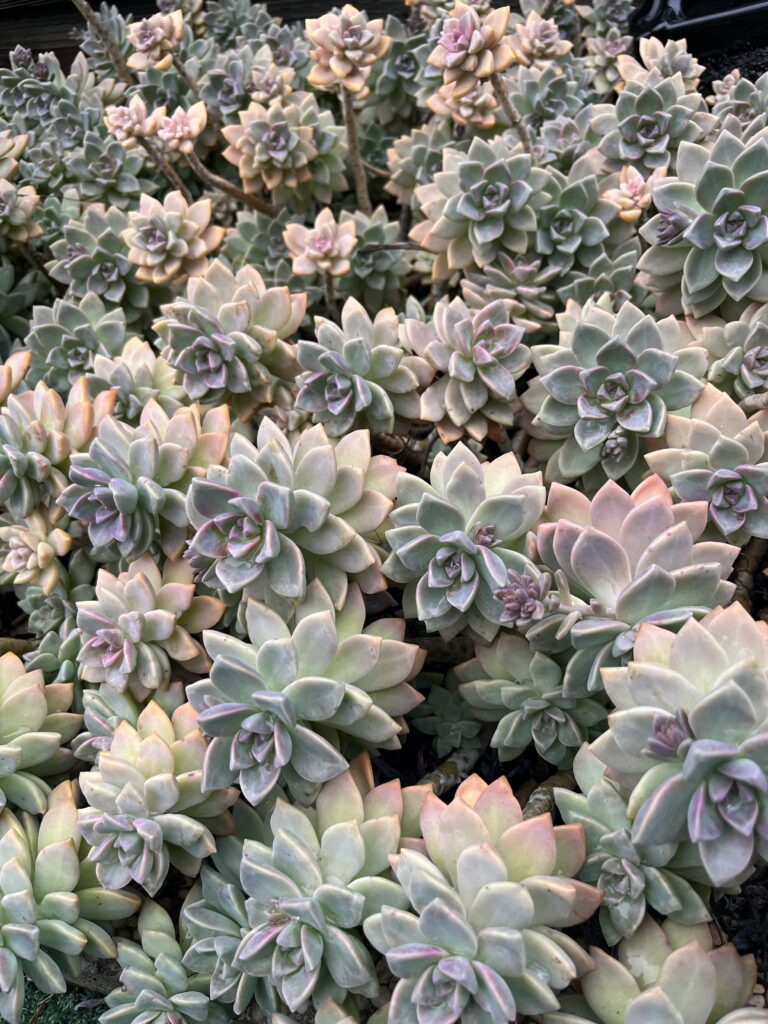
Kalanchoe Tubiflora – Mother of Millions – Chandelier Plant

Sempervivums – Hens and Chicks

And, last, but certainly not least, you can make some cute arrangements with these babies!!!


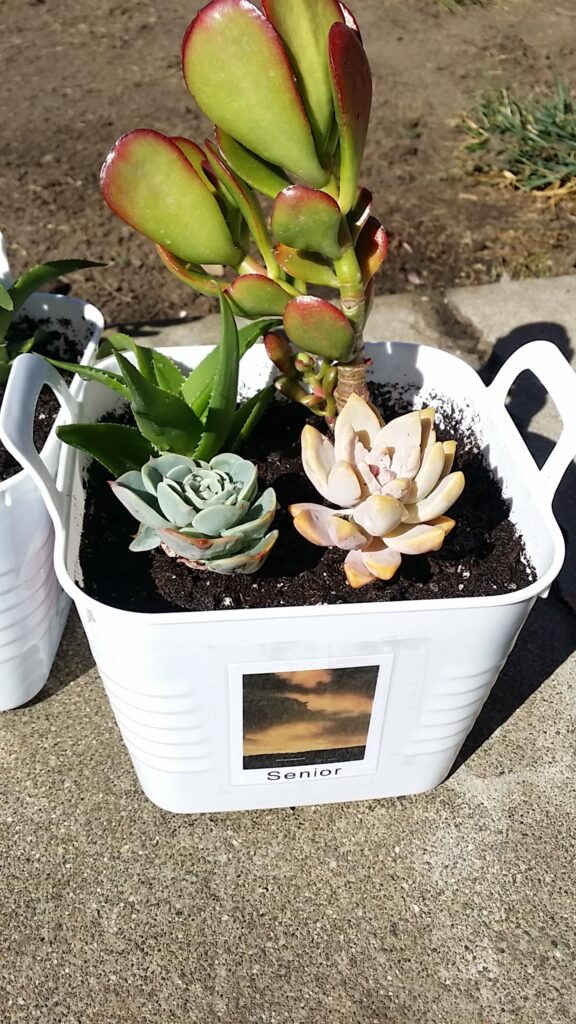
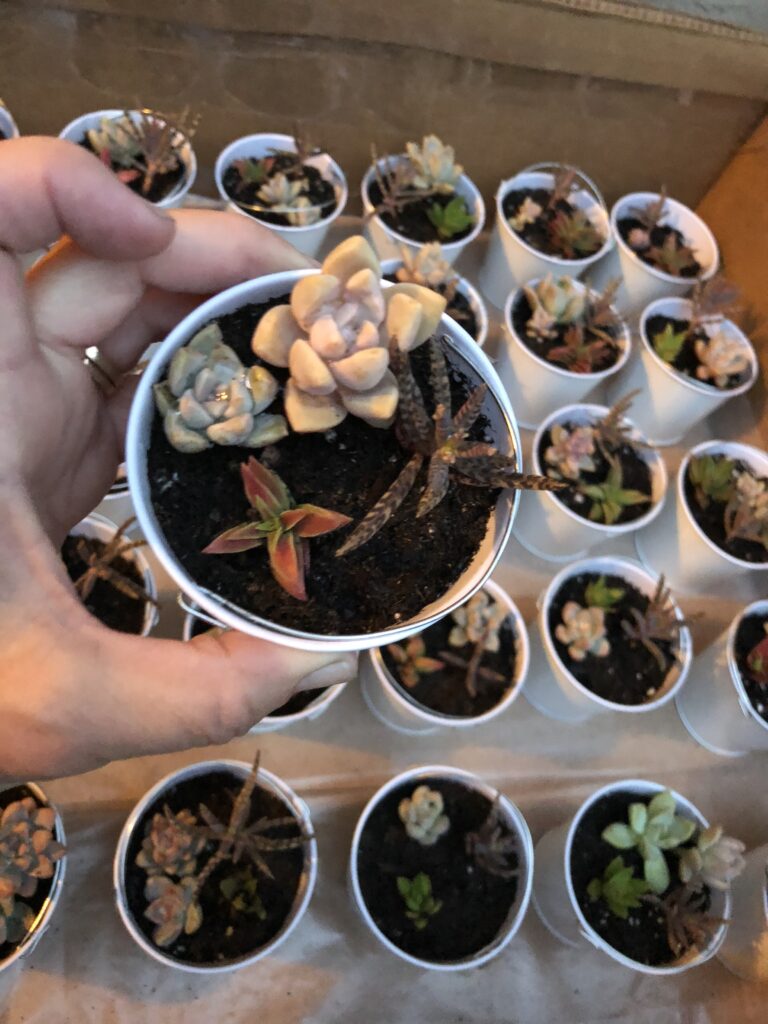
I hope you enjoyed this tutorial and are motivated to start your succulent propagation journey. It is a journey that has no end and is full of fascination, ups & downs, disappointment, gratification, love and passion. Yes, all of those feelings are a part of gardening with succulents!
Here’s to a healthy, happy garden and gardener!
Keepsake Crafter
